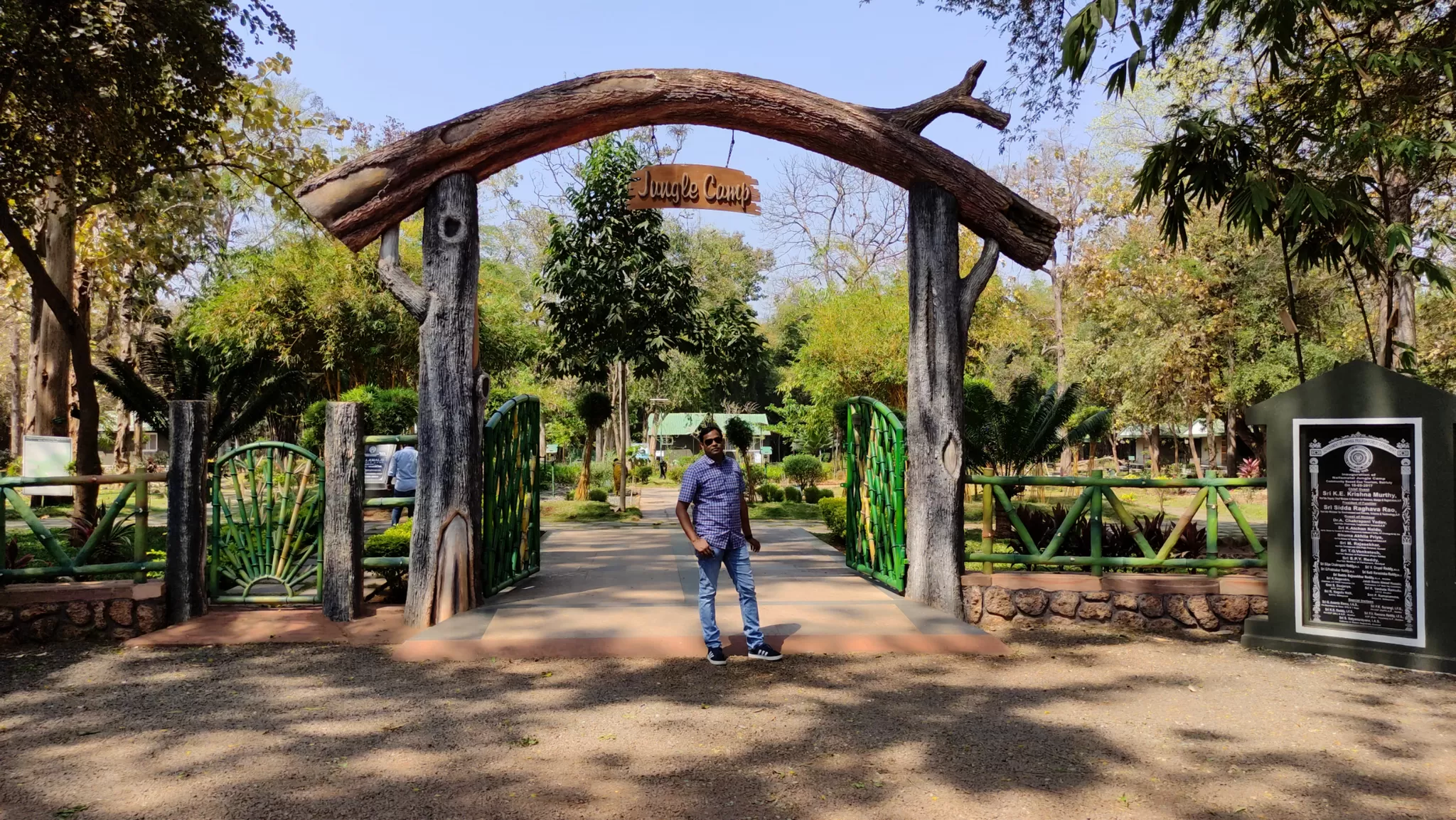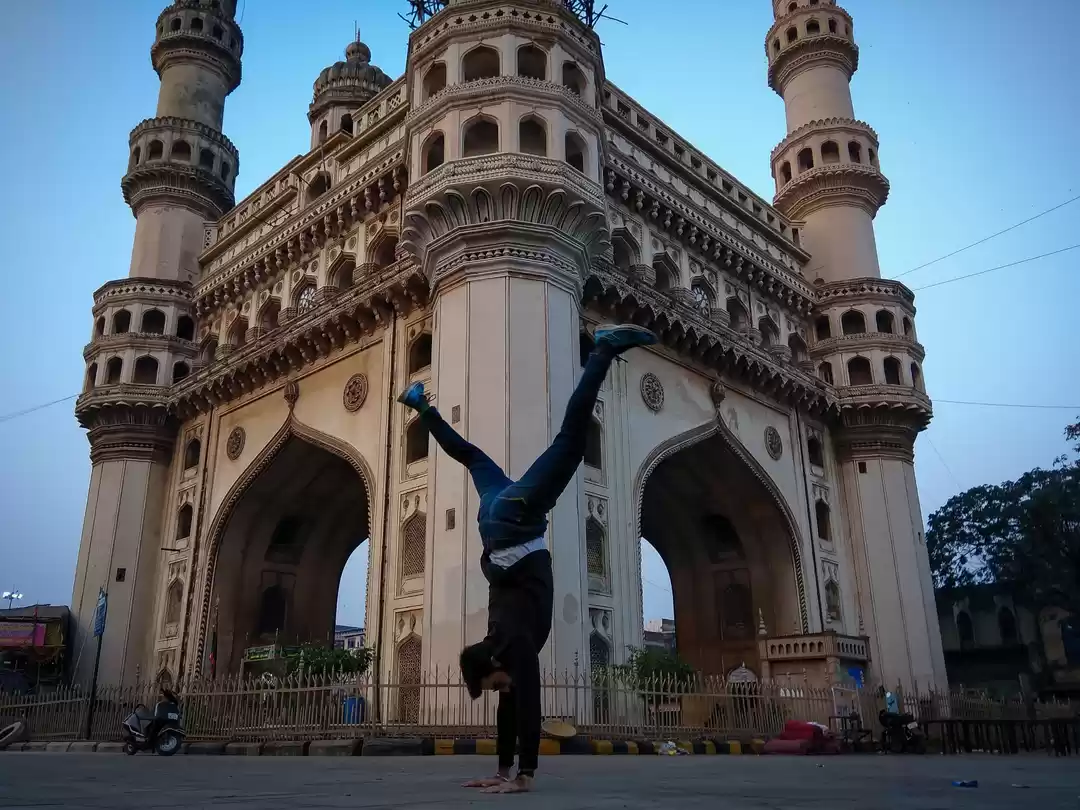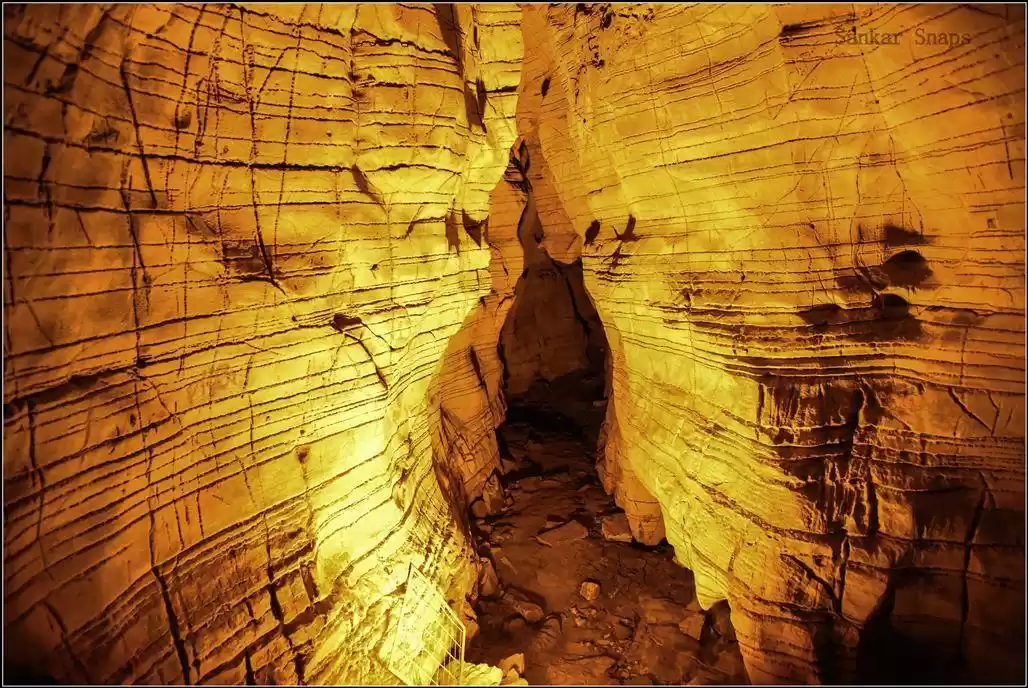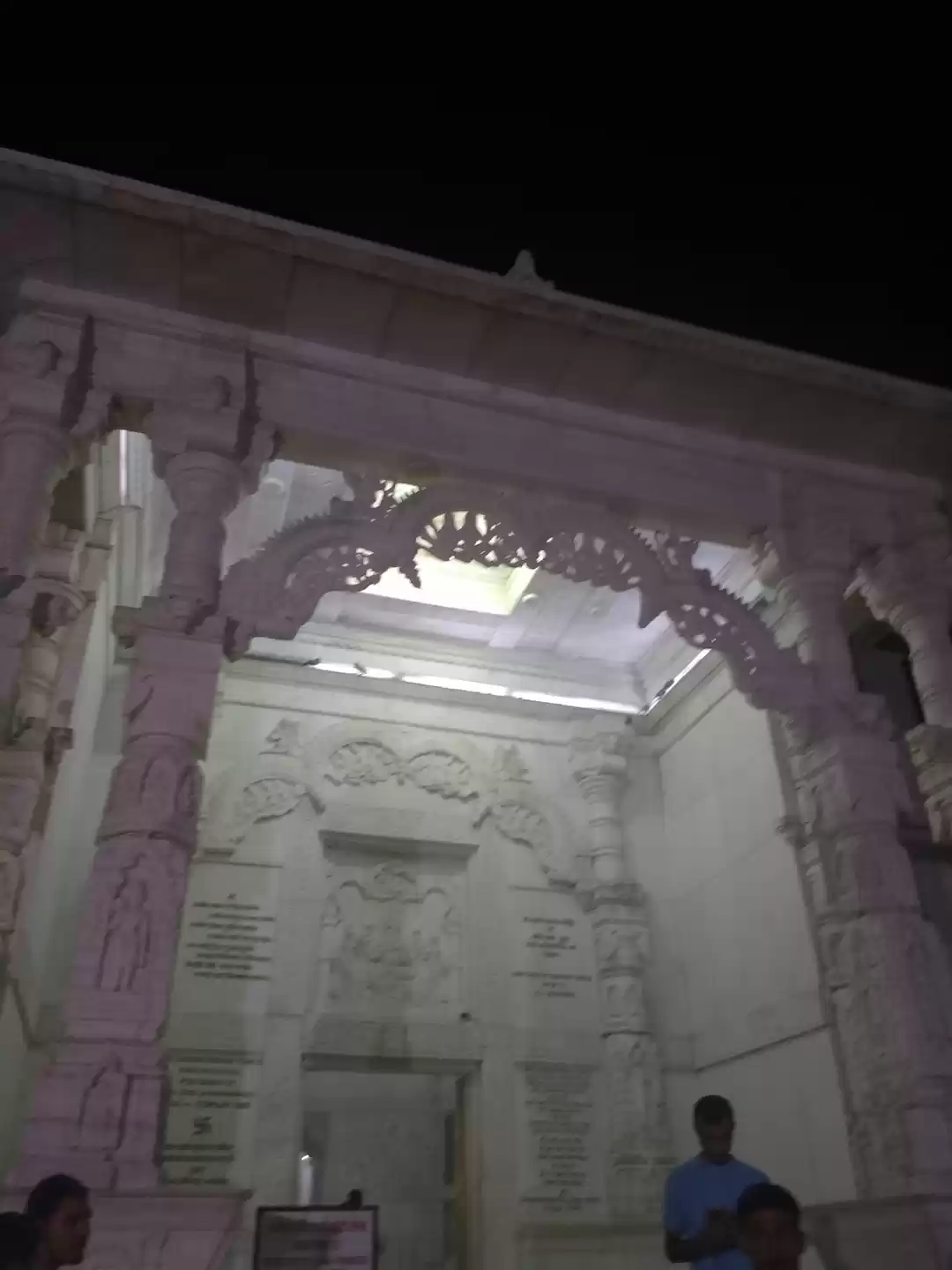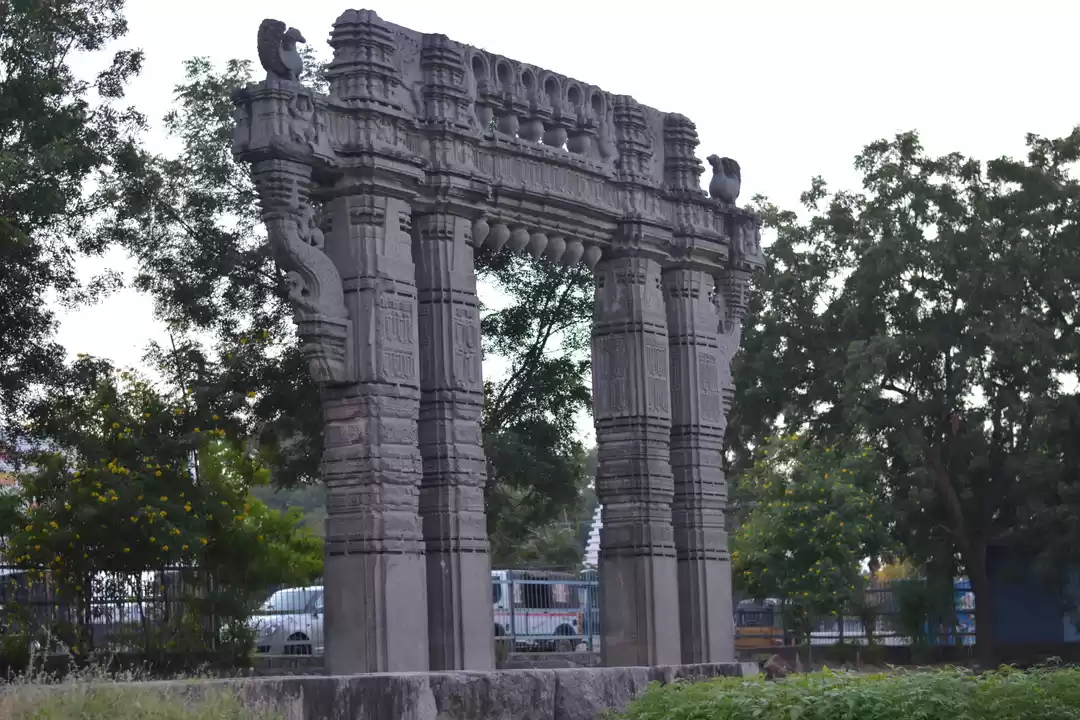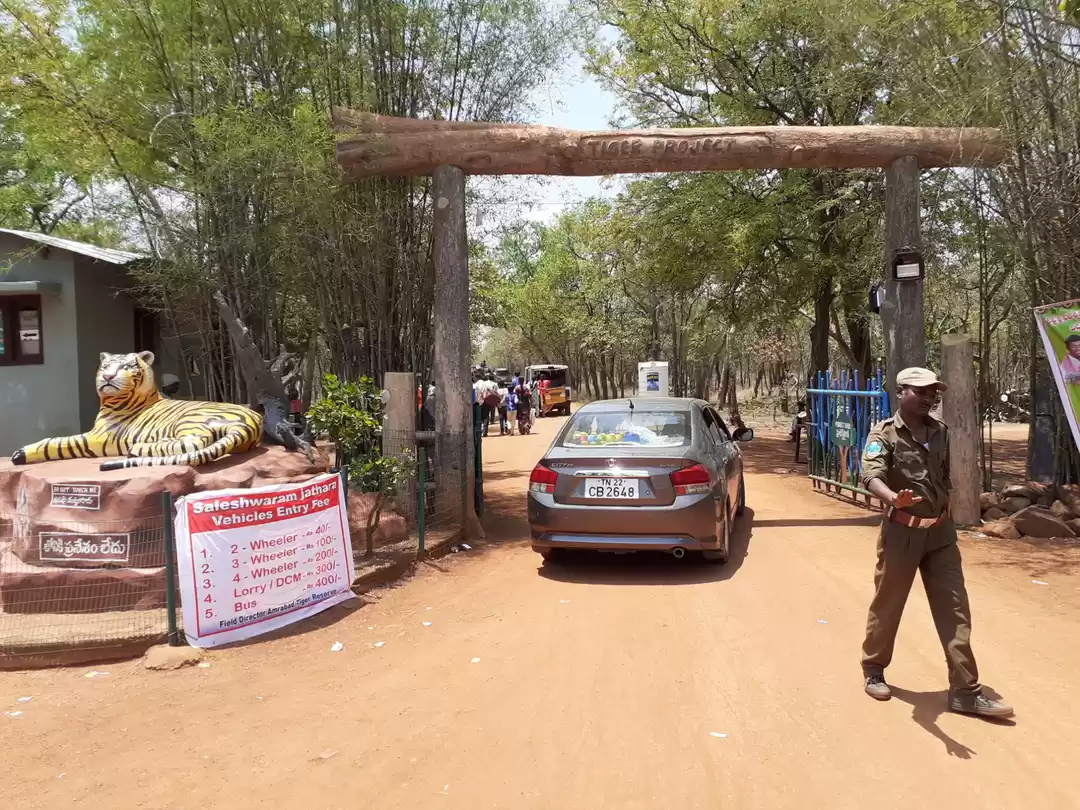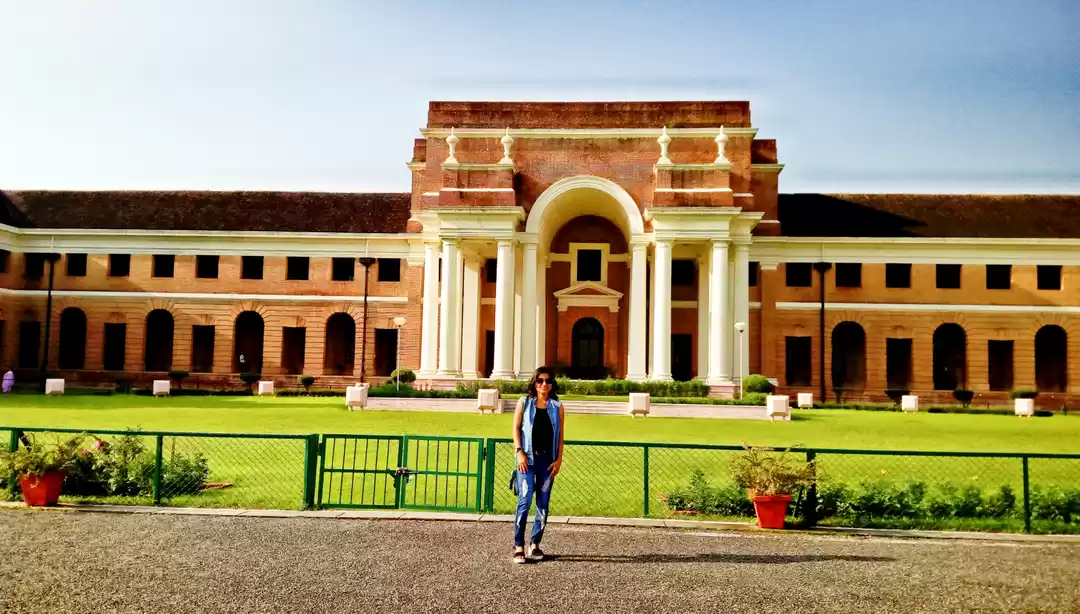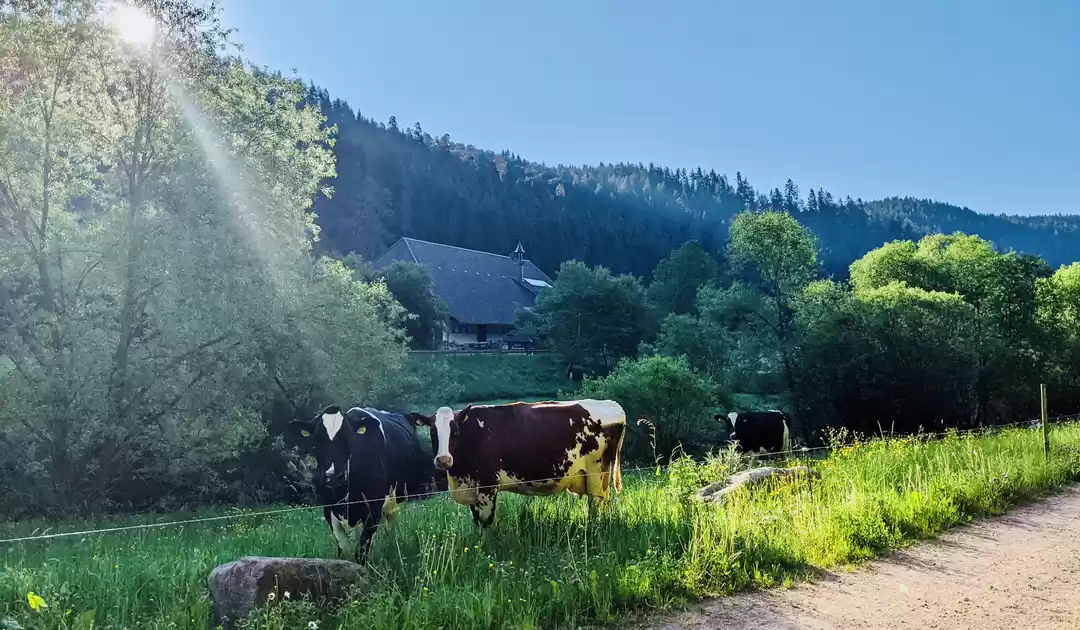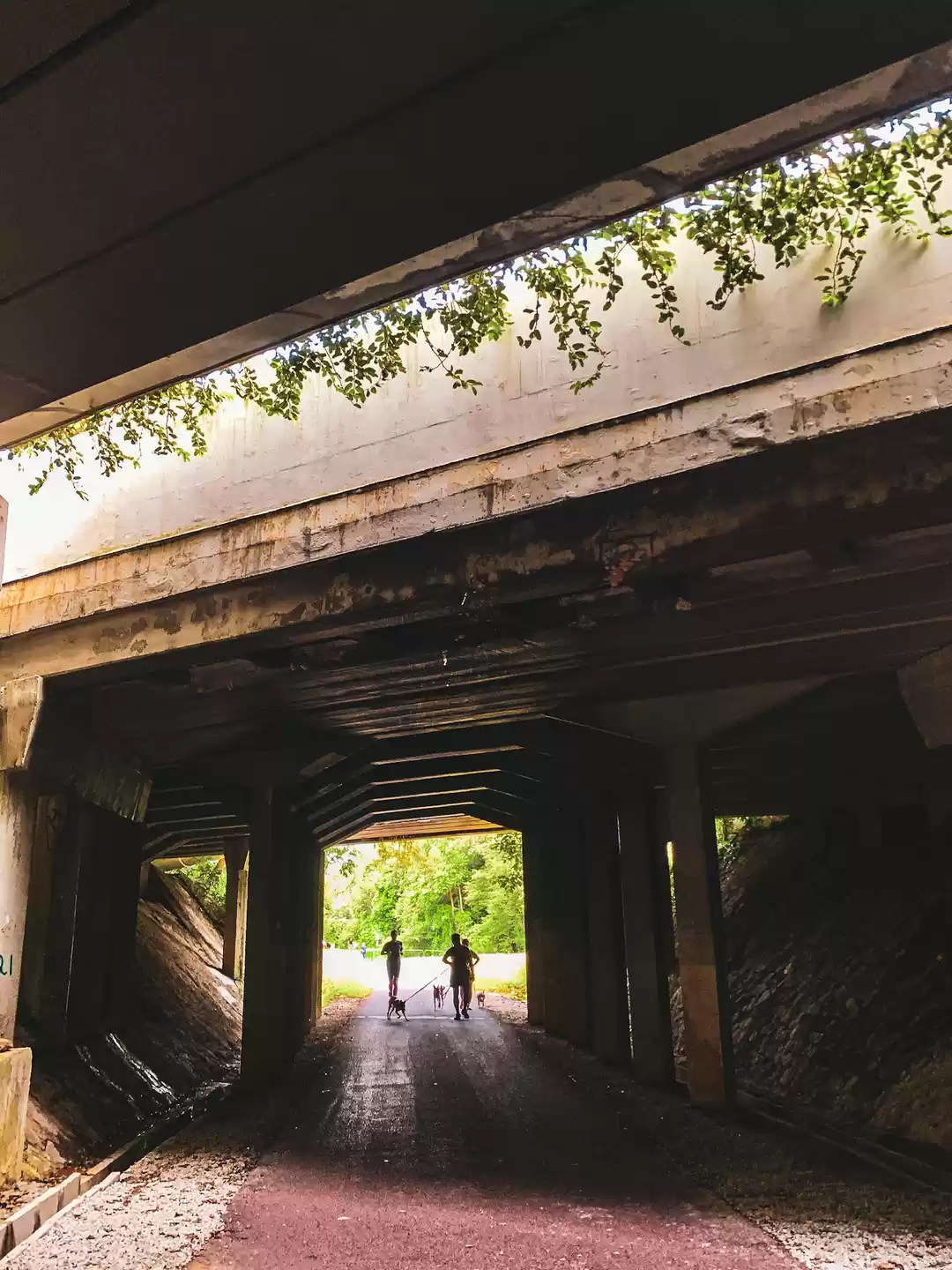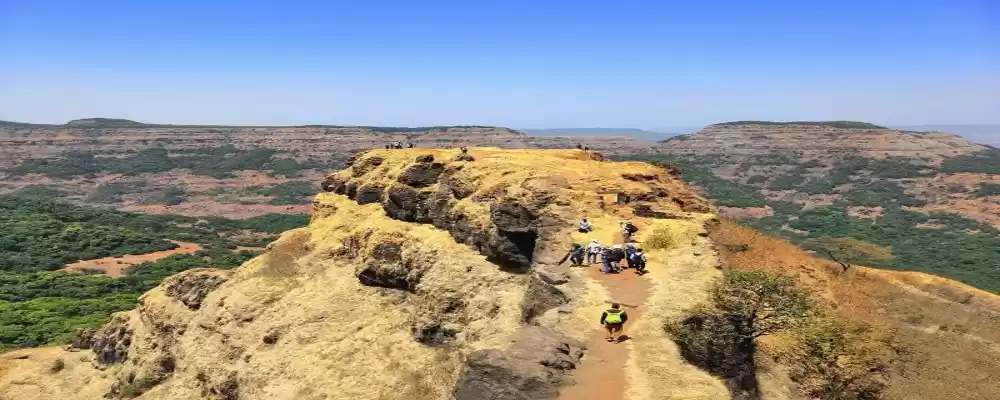Have you ever wondered what it would be like to explore a forest that is home to more than 200 species of birds, 50 species of mammals, and 20 species of reptiles? A forest that has witnessed the rise and fall of ancient kingdoms, the epic battles of heroes and villains, and the spiritual journeys of sages and saints? A forest that offers a unique and enriching experience for nature lovers, history buffs, and adventure seekers?
If you are looking for such a forest, then look no further than the Nallamala Forest, one of the largest and oldest surviving forests in India. Located in the Eastern Ghats of Andhra Pradesh, the Nallamala Forest covers an area of about 3,600 square kilometers and spans across seven districts of the state. It is also part of the Nagarjunasagar Srisailam Tiger Reserve, one of the largest tiger reserves in the country.
In this article, you will learn everything you need to know about the Nallamala Forest, including its history, culture, wildlife, attractions, and activities. You will also discover some tips and tricks to plan your trip and make the most of your visit.
History and Culture of the Nallamala Forest
The name Nallamala means “black hills” in Telugu, the local language of Andhra Pradesh. The name reflects the dark and dense nature of the forest, which has been a source of awe and mystery for centuries.
The Nallamala Forest has a rich and varied history and culture, as it has been the site of many historical and mythological events. The forest was part of the ancient kingdoms of Satavahanas, Chalukyas, Kakatiyas, and Vijayanagaras, who ruled over the region from the 3rd century BCE to the 16th century CE. The forest also witnessed the invasions of the Delhi Sultanate, the Bahmani Sultanate, and the Mughal Empire, who tried to conquer and plunder the forest and its resources.
The forest is also associated with the Hindu epics of Ramayana and Mahabharata, as it is believed that many of the characters and incidents in these stories took place in the forest. For example, it is said that Lord Rama, the hero of Ramayana, spent some time in the forest during his exile, and that he met the tribal chief Shabari, who offered him berries, in the forest. It is also said that the Pandavas, the heroes of Mahabharata, hid in the forest during their exile, and that they visited the Srisailam Temple, one of the most sacred temples in the forest.
The forest is also home to many local tribes and communities, who have been living in harmony with the forest for generations. The most prominent among them are the Chenchus, who are the original inhabitants of the forest and are considered to be the children of the forest. The Chenchus are a semi-nomadic tribe, who practice hunting, gathering, and fishing as their main livelihood. They also worship the forest and its animals, and have a rich oral tradition of songs, stories, and legends. The other tribes and communities in the forest include the Lambadas, the Yanadis, the Koyas, and the Reddys, who have their own distinct culture and traditions.
Some of the historical and cultural attractions in the Nallamala Forest are:
Srisailam Temple: This is one of the most important and revered temples in the forest, as well as in the whole of India. It is dedicated to Lord Shiva and Goddess Parvati, who are worshipped here as Mallikarjuna and Bhramaramba. The temple is one of the 12 Jyotirlingas, the most sacred shrines of Lord Shiva, and one of the 18 Shakti Peethas, the most sacred shrines of Goddess Parvati. The temple is also known for its architecture, art, and history, as it has been built and renovated by various dynasties and rulers over the centuries. The temple is located on a hilltop, overlooking the Krishna River, and offers a panoramic view of the forest and the hills.
Ahobilam Temple: This is another important and ancient temple in the forest, dedicated to Lord Vishnu, who is worshipped here as Narasimha, the half-man half-lion avatar. The temple is one of the 108 Divya Desams, the most sacred shrines of Lord Vishnu, and one of the nine Nava Narasimha Kshetras, the nine places where Lord Narasimha manifested himself. The temple is also known for its legend, as it is believed that Lord Narasimha killed the demon king Hiranyakashipu, who was the father of his devotee Prahlada, in this place. The temple is located in a valley, surrounded by the forest and the hills, and consists of nine shrines, each dedicated to a different form of Lord Narasimha.
Mahanandi Temple: This is another ancient and beautiful temple in the forest, dedicated to Lord Shiva, who is worshipped here as Mahanandiswara. The temple is known for its natural spring, which flows from the Garbhagriha, the sanctum sanctorum, and forms a large pool in front of the temple. The water of the spring is considered to be sacred and healing, and attracts many pilgrims and tourists. The temple is also known for its architecture, as it has been built with red sandstone and has intricate carvings and sculptures. The temple is located in a village, surrounded by the forest and the hills, and offers a serene and peaceful atmosphere.
Cumbum Tank: This is one of the oldest and largest man-made tanks in the forest, as well as in the whole of Asia. It was built by the Vijayanagara king Achyuta Deva Raya in the 16th century, and has a capacity of about 10 billion liters of water. The tank is also known for its engineering, as it has a unique system of channels and sluices that regulate the water flow and irrigation. The tank is also known for its scenic beauty, as it is surrounded by the forest and the hills, and has many islands and temples on its banks. The tank is located in a town, and is a popular picnic spot and boating destination.
Wildlife and Biodiversity of the Nallamala Forest
The Nallamala Forest is not only a historical and cultural treasure, but also an ecological and environmental one. The forest plays a vital role in conserving the Eastern Ghats biodiversity, providing habitat for endangered and endemic species, and regulating the climate and water resources of the region.
The Eastern Ghats are a range of mountains that run along the eastern coast of India, from Odisha to Tamil Nadu. They are one of the eight hotspots of biodiversity in India, and host a variety of ecosystems, such as tropical dry deciduous forests, tropical moist deciduous forests, tropical semi-evergreen forests, and tropical dry evergreen forests. The Nallamala Forest is one of the largest and most intact patches of forest in the Eastern Ghats, and supports a high diversity of flora and fauna.
The flora of the Nallamala Forest consists of more than 1,500 species of plants, including many medicinal and aromatic plants, such as sandalwood, red sanders, amla, and neem. The forest also has many endemic and rare plants, such as the Nallamala cycad, the Nallamala orchid, and the Nallamala lily. The forest is also home to many sacred and holy plants, such as the rudraksha, the bilva, and the tulsi.
The fauna of the Nallamala Forest consists of more than 200 species of birds, 50 species of mammals, and 20 species of reptiles. The forest is also part of the Nagarjunasagar Srisailam Tiger Reserve, one of the largest tiger reserves in the country, which covers an area of about 3,500 square kilometers and has a population of about 70 tigers. The forest also has many other endangered and endemic animals, such as the Indian pangolin, the sloth bear, the four-horned antelope, and the golden gecko.

Some of the wildlife and biodiversity attractions in the Nallamala Forest are:
Nagarjunasagar Srisailam Tiger Reserve: This is the main attraction of the forest, as it offers a chance to see the majestic and elusive tiger, as well as other animals, such as the leopard, the wild dog, the gaur, the sambar, the chital, and the nilgai. The reserve also has a rich birdlife, with more than 150 species of birds, such as the peacock, the hornbill, the kingfisher, and the eagle. The reserve also has many scenic spots, such as the Nagarjunasagar Dam, the Srisailam Dam, and the Ethipothala Waterfall.
Rollapadu Wildlife Sanctuary: This is another attraction of the forest, as it is the only habitat of the great Indian bustard, one of the most critically endangered birds in the world. The sanctuary also has other animals, such as the blackbuck, the wolf, the jackal, and the fox. The sanctuary also has a watchtower, from where one can observe the wildlife and the landscape.
Mallela Theertham Waterfall: This is a beautiful and serene waterfall, located in the heart of the forest. The waterfall is formed by the Krishna River, which cascades down from a height of about 150 feet, creating a pool at the bottom. The waterfall is also considered to be sacred, as it is believed that many sages and saints have performed penance here. The waterfall is also a popular trekking and camping destination, as it offers a refreshing and relaxing experience.
Bairluty View Point: This is a spectacular and panoramic view point, located on a hilltop, overlooking the forest and the hills. The view point offers a breathtaking view of the sunrise and the sunset, as well as the misty and green landscape. The view point is also a great place to spot some of the wildlife, such as the deer, the monkey, and the bird. The view point is also a great place to enjoy the silence and the solitude of the forest.
Attractions and Activities in the Nallamala Forest
The Nallamala Forest is not only a historical and cultural treasure, but also a tourism treasure. The forest offers a range of attractions and activities that cater to different tastes and preferences, such as scenic beauty, adventure, and spirituality.
The scenic beauty of the forest is evident in its lush greenery, rolling hills, sparkling rivers, and cascading waterfalls. The forest is a feast for the eyes and the soul, as it provides a refreshing and relaxing escape from the hustle and bustle of the city life. The forest is also a paradise for photographers, as it offers many opportunities to capture the stunning and diverse landscape and wildlife.
The adventure of the forest is evident in its challenging and thrilling trails, camps, safaris, and boating. The forest is a playground for the adventurous and the curious, as it provides a chance to explore the hidden and unknown aspects of the forest and its inhabitants. The forest is also a haven for trekkers, campers, safari-goers, and boaters, as it offers many options to experience the forest in different ways and modes.
The spirituality of the forest is evident in its sacred and holy sites, temples, and meditation centers. The forest is a sanctuary for the spiritual and the devout, as it provides a connection to the divine and the ancient. The forest is also a destination for pilgrims, temple-goers, and meditators, as it offers many places to worship, pray, and meditate.

Some of the attractions and activities in the Nallamala Forest are:
Thummalabailu Trek: This is one of the most popular and exciting treks in the forest, as it takes you through the dense and diverse forest, along the banks of the Krishna River, and to the top of the Thummalabailu Hill, which offers a spectacular view of the forest and the river. The trek is about 12 kilometers long, and takes about 4 to 5 hours to complete. The trek is suitable for beginners and experts alike, as it has a moderate difficulty level and a well-marked trail. The trek is also a great way to spot some of the wildlife, such as the deer, the monkey, and the bird.
Nemaligundam Camp: This is one of the most serene and scenic camps in the forest, as it is located in a valley, surrounded by the forest and the hills, and near a stream. The camp is a perfect place to spend a night or two in the forest, as it provides basic amenities, such as tents, sleeping bags, toilets, and food. The camp is also a perfect place to enjoy the nature, as it provides a bonfire, a barbecue, and a star-gazing session. The camp is also a perfect place to interact with the locals, as it is run by the Chenchu tribe, who can share their stories and culture with you.
Srisailam Safari: This is one of the most thrilling and rewarding safaris in the forest, as it takes you to the Nagarjunasagar Srisailam Tiger Reserve, where you can see the majestic and elusive tiger, as well as other animals, such as the leopard, the wild dog, the gaur, the sambar, the chital, and the nilgai. The safari is about 50 kilometers long, and takes about 3 to 4 hours to complete. The safari is suitable for all ages and groups, as it has a comfortable and safe vehicle and a knowledgeable and friendly guide. The safari is also a great way to learn more about the wildlife and the conservation efforts in the forest.
Cumbum Lake Boating: This is one of the most relaxing and enjoyable boating in the forest, as it takes you to the Cumbum Tank, one of the oldest and largest man-made tanks in the forest, as well as in the whole of Asia. The boating is about 30 minutes long, and takes you around the tank, where you can see the islands and the temples on its banks. The boating is suitable for all ages and groups, as it has a spacious and stable boat and a courteous and helpful staff. The boating is also a great way to admire the beauty and the engineering of the tank.
Nallamala Forest Photography: This is one of the most creative and satisfying photography in the forest, as it gives you a chance to capture the stunning and diverse landscape and wildlife of the forest. The photography is a self-guided and flexible activity, as you can choose your own time, location, and subject. The photography is suitable for all levels and types of photographers, as it has a variety of scenes and settings, such as the forest, the hills, the rivers, the waterfalls, the animals, the birds, and the reptiles. The photography is also a great way to express your artistic and aesthetic vision of the forest.
Srisailam Meditation: This is one of the most spiritual and peaceful meditation in the forest, as it takes you to the Srisailam Temple, one of the most sacred and revered temples in the forest, as well as in the whole of India. The meditation is a guided and structured activity, as you can join a group of meditators, who follow a specific technique and schedule. The meditation is suitable for all levels and backgrounds of meditators, as it has a simple and effective method and a supportive and respectful environment. The meditation is also a great way to connect with the divine and the ancient in the forest.
Tips and Tricks to Plan Your Trip to the Nallamala Forest
Now that you have learned about the attractions and activities in the Nallamala Forest, you may be wondering how to plan your trip to this amazing destination. Here are some tips and tricks to help you with the practical and logistical aspects of visiting the Nallamala Forest, such as how to reach, where to stay, what to pack, and what to expect.
How to reach the Nallamala Forest
The Nallamala Forest is located in the Eastern Ghats of Andhra Pradesh, and can be reached by road, rail, or air. The nearest major city is Hyderabad, which is about 250 kilometers away from the forest. You can take a bus, a train, or a flight to Hyderabad, and then take a taxi, a car, or a bike to the forest. The best route to take is the Hyderabad-Srisailam route, which passes through the forest and offers a scenic and smooth drive. You can also take the Hyderabad-Kurnool route, which is shorter but less scenic and more crowded.
Where to stay at the Nallamala Forest
The Nallamala Forest has a range of accommodation options, from budget to luxury, depending on your preference and budget. The best place to stay is the AP Tourism Haritha Resorts, which are run by the Andhra Pradesh Tourism Authority, and are located in various places in the forest, such as Srisailam, Ahobilam, Mahanandi, and Cumbum. These resorts offer comfortable and clean rooms, with amenities such as AC, TV, Wi-Fi, and hot water. They also offer delicious and hygienic food, with options such as vegetarian, non-vegetarian, and local cuisine. They also offer other facilities, such as parking, laundry, and security. They also offer packages, such as sightseeing, safari, and boating, at reasonable rates. You can book these resorts online, or through their toll-free number, or through their offices in Hyderabad and other cities.
What to pack for the Nallamala Forest
The Nallamala Forest has a tropical climate, with hot and dry summers, and cool and wet winters and monsoons. The average temperature ranges from 15°C to 40°C, and the average rainfall ranges from 800 mm to 1200 mm. The best time to visit the forest is during the winter or monsoon season, from October to March, when the weather is pleasant and the forest is green and lush. You should pack accordingly, depending on the season and the activities you plan to do. Some of the essential items to pack are:
Clothes: You should pack light and comfortable clothes, such as cotton shirts, pants, shorts, and dresses. You should also pack warm and waterproof clothes, such as jackets, sweaters, and raincoats, for the cold and rainy days. You should also pack appropriate clothes, such as saris, kurtas, and dupattas, for visiting the temples and the villages, as they are considered to be respectful and modest.
Shoes: You should pack sturdy and comfortable shoes, such as sneakers, boots, and sandals. You should also pack socks, bandages, and antiseptic cream, for preventing and treating blisters and cuts. You should also pack slippers, flip-flops, or crocs, for walking around the resorts and the camps.
Accessories: You should pack useful and fun accessories, such as sunglasses, hats, caps, scarves, and umbrellas, for protecting yourself from the sun and the rain. You should also pack cameras, binoculars, and flashlights, for capturing and observing the beauty and the wildlife of the forest. You should also pack books, magazines, and games, for entertaining yourself during the travel and the leisure time.
Essentials: You should pack important and necessary items, such as ID cards, passports, visas, tickets, bookings, and cash, for proving your identity and paying for your expenses. You should also pack medicines, first-aid kits, toiletries, and snacks, for taking care of your health and hygiene. You should also pack water bottles, reusable bags, and eco-friendly products, for staying hydrated and reducing your environmental impact.
What to expect at the Nallamala Forest
The Nallamala Forest is a wonderful and unique destination, but it also has some challenges and risks that you should be aware of and prepared for. Some of the things that you should expect are:
1. The forest is a remote and wild place, and has limited facilities and services, such as electricity, internet, phone, and medical. You should be ready to face some inconveniences and difficulties, such as power cuts, network issues, communication gaps, and health emergencies. You should also be respectful and cooperative with the local authorities and staff, who are trying their best to provide you a safe and comfortable stay.
2. The forest is a diverse and dynamic place, and has variable weather and terrain conditions, such as heat, cold, rain, fog, and mud. You should be flexible and adaptable to the changing situations, and follow the instructions and guidelines of your guide and driver, who are familiar with the forest and its routes. You should also be cautious and alert while walking, driving, or boating in the forest, and avoid any risky or reckless behavior, such as speeding, overtaking, or swimming.
3. The forest is a living and breathing place, and has many animals and plants, some of which may be harmful or poisonous, such as snakes, scorpions, spiders, and leeches. You should be careful and respectful while interacting with the wildlife and the vegetation, and keep a safe distance and avoid any provocation or disturbance. You should also be aware and prepared for any bites, stings, or allergies, and carry appropriate medicines and remedies, such as antivenom, antihistamine, and band-aid.
4. The forest is a sacred and holy place, and has many temples and villages, where the local people and the deities reside. You should be courteous and respectful while visiting these places, and follow the customs and traditions, such as removing your shoes, covering your head, and offering prayers. You should also be generous and grateful to the local people, who are hospitable and friendly, and offer them some gifts or donations, such as fruits, flowers, or money.
Conclusion
The Nallamala Forest is a hidden gem of Andhra Pradesh that offers a unique and enriching experience for nature lovers, history buffs, and adventure seekers. The forest has a rich and varied history and culture, a high and diverse wildlife and biodiversity, and a range of attractions and activities that cater to different tastes and preferences. The forest also has some challenges and risks that require some planning and preparation, but also add to the thrill and excitement of the visit.
If you are interested in visiting the Nallamala Forest, you can book your trip with Tripoto, the leading online travel platform that provides you with the best deals and packages, the best guides and drivers, and the best content and reviews. You can also subscribe to our newsletter, or follow us on social media, to get the latest updates and tips on the Nallamala Forest and other destinations.



